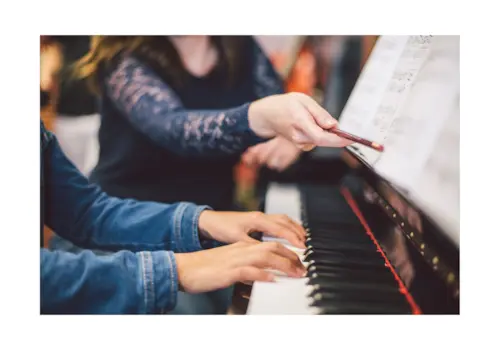Hanon exercises help drastically improve THREE key areas of your playing...
Hanon exercises feature in households all around the globe, and for good reason. These piano exercises, which have been in existence for over 150 years, are proven to massively improve THREE key areas of your piano playing. In this article, we’re going to tell you what Hanon exercises are, how they can help you improve, and we’re also going to give you some of your own to try out.
What are Hanon exercises?
Created by French piano pedagogue and composer Charles Louis-Hanon, Hanon exercises consist of independent finger practice. The finger exercises train the pianist in speed, agility, strength and precision of all the fingers, as well as training wrist flexibility. Hanon himself developed 60 finger exercises and assembled them into a book called The Virtuoso Pianist - first published in 1873. Split into three different levels of difficulty they are suitable for all levels and abilities.
You can buy The Virtuoso Pianist below. We highly recommend getting your hands on a copy!
This particular piano exercise has always had its supporters over the years, despite a fair amount of backlash over the safety of the exercises. In the same way that sports exercises can be harmful to your muscles if done wrong, Hanon exercises can also cause harm if not conducted in the right way. HOW you go about using these exercises is far more important than WHAT exercises you use. We’ll show you how to perform them safely and effectively.
DID YOU KNOW? One such fan of Hanon’s work was the great Sergei Rachmaninoff. He claimed that these exercises were the reason why Russian conservatoires delivered an explosion of piano virtuosi in Rachmaninoff’s time.
How can they help me improve?
Your hands are the tool for playing the piano, right? To play to the best of your ability, you need to sharpen that tool. Hanon exercises help train and strengthen your hand by individually working on each finger separate from the rest. The piano technique helps to eradicate any unevenness in the robustness of your fingers. Here are THREE AREAS of your playing that will see massive improvements...

3 essential Hanon exercises to try out
Exercise no 1 in D

This is the very first exercise from Charles Louis-Hanon’s 60 Hanon exercises. It is the easiest of the 60, and helps improve finger strength and independence, as well as wrist and forearm strength. Try hands separately before moving onto hands together. Only four bars are shown in the image above, but in total this exercise consists of 30 bars. Simply continue the pattern to complete the exercise.
TIP: Each time you reach the top of the phrase, drop your wrist. As you descend, gradually raise your wrist back up. Repeat this when you reach the bottom of the phrase.
Exercise no 6 in F

Exercise no 6 is ideal for improving wrist and forearm strength. Similarly to the first exercise, there are 30 bars in total. Continue the pattern to complete the exercise. It’s about two minutes in total. This will massively aid your endurance when playing repertoire later in your piano practice.
TIP: Instead of using your fingers as the main strength in this exercise, use your forearm. This is much safer! Place your free hand just underneath your forearm, and guide your wrist as it rotates from side to side.
Graham Fitch’s adaptation of a Hanon exercise
Called the five-finger exercise, Piano teacher and regular Pianist contributor Graham Fitch has altered the original principle of Hanon in order to create an exercise that focuses purely on finger strength and independence. Watch the video above to learn this fantastic five-finger exercise!
Despite Hanon exercises having their fair share of critics over the years, if done properly they can improve your technical level substantially. Always make sure you are focusing on your form. These exercises are highly recommended by piano teachers around the globe, so get practising!








